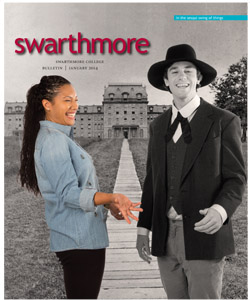Food For Thought
Orson Welles dishes up sour grapes
Peter Biskind ’62, My Lunches with Orson: Conversations between Henry Jaglom and Orson Welles,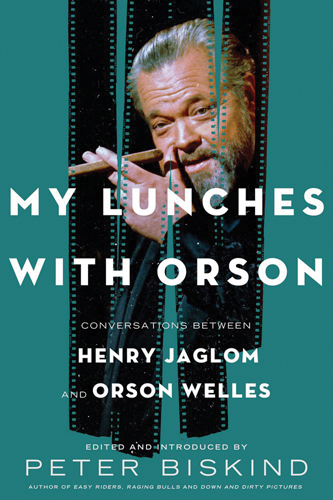 Metropolitan Books, New York, 2013, 320 pp.
Metropolitan Books, New York, 2013, 320 pp.
In the midst of one of the many midday meals chronicled in My Lunches With Orson, edited by Peter Biskind ’62, Orson Welles starts venting to his perennial companion, the director Henry Jaglom, about the unpleasant experience of reading a biography of the poet Robert Graves. It’s not that the book was bad, Welles explains, but “I learned more about him than I wanted to know.”
That’s certainly a danger with Lunches, which finds Welles near the end of his career and, unknowingly, his life. (He died in 1985; the book’s transcripts begin in 1983.) It’s dispiriting to hear the director of Citizen Kane and Touch of Evil laying plans for new works and knowing they would all come to naught, to hear him call King Lear “the part I was born to play,” knowing he would never get to play it. To hear Welles over the course of his periodic meetings at Los Angeles’ Ma Maison, captured, purportedly with his consent, by a tape recorder hidden in Jaglom’s bag, is to eavesdrop on a great man all but defeated, whittling down his more successful colleagues with no small amount of spite. Depending on your tolerance for Hollywood dish, this is Welles either uncensored or unhinged, asserting that Josef von Sternberg “never made a good picture” and disparaging his one-time champion Peter Bogdanovich as a disloyal careerist. Even at his most petty, Welles’ wit is lethal: He says that Marlon Brando, even at his pre-Apocalypse Now weight, had a neck like “a huge sausage, a shoe made of flesh.” The collective bile can be wearisome. It’s one thing for Welles to snub Richard Burton, who trots over to ask if Elizabeth Taylor might pay his table a visit, quite another for Welles to dress down the restaurant’s wait staff for the sin of asking how he’s enjoying his meal. (Jaglom is even worse, equaling Welles’ ill humor with much less justification.)
But Welles can also be spectacularly eloquent, in criticism and in praise. Of Carole Lombard, whom he esteems, he says, “My God, she was earthy. She looked like a great beauty, but she behaved like a waitress in a hash house. That was her style of acting, too, and it had a great allure.” (For proof of her earthiness, track down the outtakes from My Man Godfrey, where she swears like a sailor with Tourette’s.) Although some of Welles’ enmity toward Charlie Chaplin is affixed to the idea that Chaplin stole the script for Monsieur Verdoux from him—Welles received screen credit for the idea about a Bluebeard-like killer, but Chaplin claimed to have written the screenplay himself—his preference for Buster Keaton and Harold Lloyd is expressed without malice. Chaplin he admits, “was absolutely a genius,” but Lloyd was “the greatest gagman in the history of movies,” and Keaton was “more versatile, more, finally, original.” Whether or not one agrees with Welles’ assessment that John Ford’s The Searchers was “terrible,” it’s galvanizing to hear him disrupt the accepted canon. (Interestingly, one of the Ford pictures he looks kindly on is How Green Was My Valley, which these days is best remembered as the movie that beat Citizen Kane for the Best Picture Academy Award.)
In his introduction, Biskind says that the profligate Welles “needed someone to yell, ‘Focus!’ and this was the mantle Jaglom assumed.” At least on these tapes, it’s a role he plays fitfully, sometimes pushing Welles toward potential projects and apparently acting as his agent, at others furthering his acidic musings on the likes of Johnny Carson, whom both agree without much explanation is a plague upon the earth. “There can be nothing more sterile than an extended conversation between two people who basically agree,” Welles tells Jaglom at one point. “If we basically disagreed we’d be getting somewhere.” But even when the two were in sync, there was plenty of disagreement within Welles himself.
—Sam Adams ’95 is the editor of Indiewire’s Criticwire blog and a member
of the National Society of Film Critics.
Books
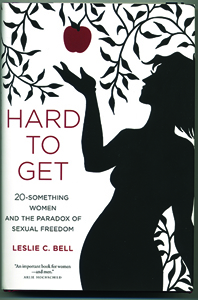 Leslie Bell ’92, Hard to Get: 20-Something Women and the Paradox of Sexual Freedom, University of California Press, 2013; 262 pp. This intimate examination of the sex and love lives of 20-something American women reveals the paradox of opportunity and uncertainty they face as they traverse the complex landscape of sexual desire and pleasure.
Leslie Bell ’92, Hard to Get: 20-Something Women and the Paradox of Sexual Freedom, University of California Press, 2013; 262 pp. This intimate examination of the sex and love lives of 20-something American women reveals the paradox of opportunity and uncertainty they face as they traverse the complex landscape of sexual desire and pleasure.
Peter Cohan ’79, Hungry Start-up Strategy: Creating New Ventures With Limited Resources and Unlimited Vision, Berrett-Koehler Publishers, 2012; 244 pp. Aimed at startup entrepreneurs, the author identifies and analyses the areas crucial to being successful: goal setting, market selection, raising capital, team building, gaining market share, and adapting to change.
Clayvon C. Harris ’88, Year of Trial, Year of Grace — A Catholic’s Search for Grace, Angelwalk, 2012; 125 pp. Inspiring and deeply intimate, Harris explores a contemporary perspective on Catholicism through a series of weekly reflections interwoven with themes of guilt, scandal, and the power of prayer.
Ethan Hauser ’92, The Measures Between Us, Bloomsbury, 2013; 390 pp. World-renowned auth
or Stephen King regards Hauser’s book as “a beautifully written and completely compelling story about the storms that flood towns and the ones that flood human lives. … The very essence of a good read.”
Stephen Henighan ’84, A Green Reef: The Impact of Climate Change, Linda Leith Publishing, 2013; 50 pp.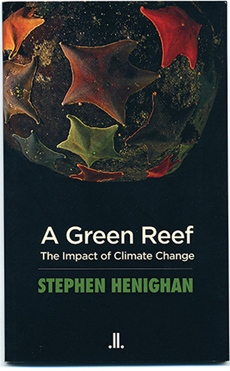 The author, a successful writer of fiction and nonfiction, offers an essay incorporating personal memoir and daunting scientific evidence to inform readers of the repercussions of global warming and climate change for life on earth.
The author, a successful writer of fiction and nonfiction, offers an essay incorporating personal memoir and daunting scientific evidence to inform readers of the repercussions of global warming and climate change for life on earth.
Tony Holtzman ’55, Forever Wild, Cloud Splitter Press, 2013; 257 pp. This third book in the Adirondack Trilogy continues to bring history to life, as Holtzman presents a stand-alone story that serves also as the conclusion to his riveting novels of the Carter family and their positions as leading citizens of 19th-century Franklin County, N.Y.
David Chalmers ’49, And the Crooked Places Made Straight: The Struggle for Social Change in the 1960s, The Johns Hopkins University Press, second edition, 1996, updated 2013; 264 pp. Pulitzer prize-winning author David J. Garrow calls this work “an exceptionally valuable overview of the 1960s, replete with astute interpretations and commentary.”
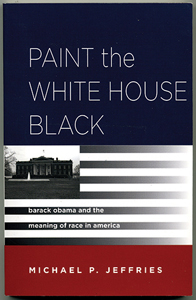 Michael P. Jeffries ’02, Paint the White House Black: Barack Obama and the Meaning of Race in America, Stanford University Press, 2013, 156 pp. Critic Michael Eric Dyson praises the author’s clarification of “the shifting intellectual and social anatomy of our most perplexing national obsession.”
Michael P. Jeffries ’02, Paint the White House Black: Barack Obama and the Meaning of Race in America, Stanford University Press, 2013, 156 pp. Critic Michael Eric Dyson praises the author’s clarification of “the shifting intellectual and social anatomy of our most perplexing national obsession.”
William Krist ’62, Globalization and America’s Trade Agreements, Woodrow Wilson Center Press and The Johns Hopkins University Press, 2013; 256 pp. Krist examines the United States’ intricate trade agreements of the last 25 years in a way that former Deputy U.S. Trade Representative Alan Wolff applauds as “very important and needed.”
William Matchett ’49, Airplants: Selected Poems, Antrim House, 2013; 108 pp.
According to poet William Merwin, Matchett’s poetry [in the tradition of Wordsworth and Frost] displays “a quiet tone in a pastoral mode taking its strength and merit from a closeness and fondness for [Matchett’s] observations of the living non-human world around him.”
John C. Pollock ’64, Media and Social Inequality: Innovations in Community Structure Research, Routledge, 2013; 190 pp. Previously a Fulbright Scholar in Argentina, Pollock systematically explores the impact of community inequality on reporting political and social change.
Hugh Weber ’00, Dude to Dad: The First 9 Months, Familius LLC, 2013; 114 pp. This father’s guide to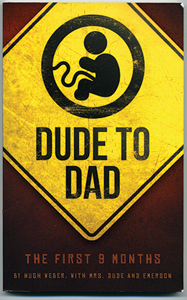 transitioning from dude to dad is hilarious yet wise, advising dads-to-be to learn things like the language of pregnancy and childbirth, burning the baby books, and indulging yourself. It even contains a short vocabulary of “Terrifying Pregnancy Words of the Day.”
transitioning from dude to dad is hilarious yet wise, advising dads-to-be to learn things like the language of pregnancy and childbirth, burning the baby books, and indulging yourself. It even contains a short vocabulary of “Terrifying Pregnancy Words of the Day.”
Parke Wilde ’90, Food Policy in the United States: An Introduction, Routledge 2013; 236 pp. Offering a broad introduction to food policies in the United States, the author writes for those readers who are concerned not only with the economic interests of farmers but also with an eye to nutrition, sustainable agriculture, the environment, and food security.
Gavin Wright ’65, Sharing the Prize: The Economics of the Civil Rights Revolution in the American South, Harvard University Press, 2013; 353 pp. American economic historian Naomi Lamoreaux says that this book alters “our understanding of the civil rights movement in the South, showing how … civil disobedience of black Southerners … improved the lives of … whites and blacks.
Benjamin Aldes Wurgaft ’00, Jews at Williams: Inclusion, Exclusion, and Class at a New England Liberal Arts College, Williams College Press, 2013; 186 pp. This book studies the anti-Semitism, assimilation, and class that governed Jewish participation in elite higher education for the first two-thirds of the 20th century.
 Email This Page
Email This Page